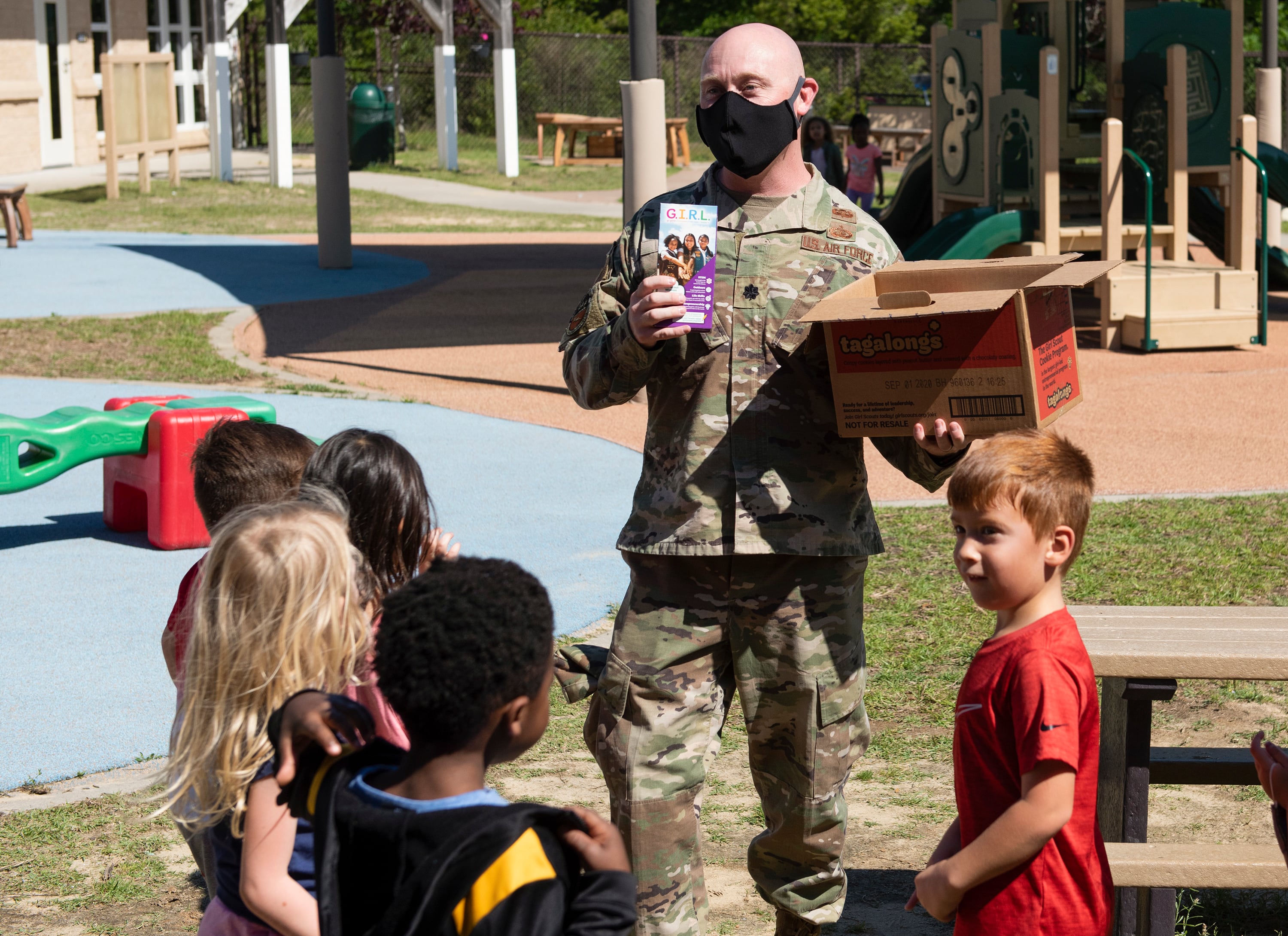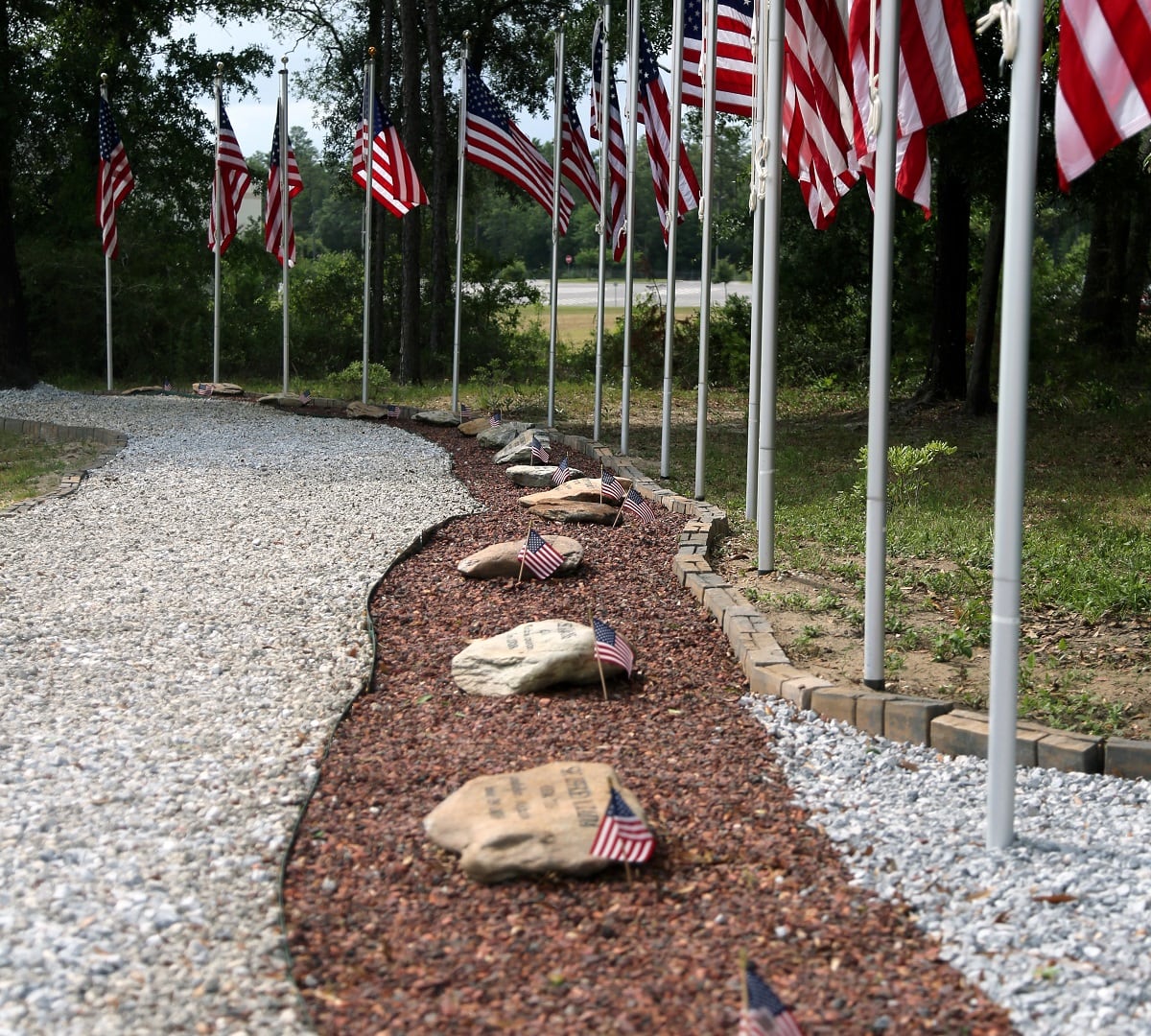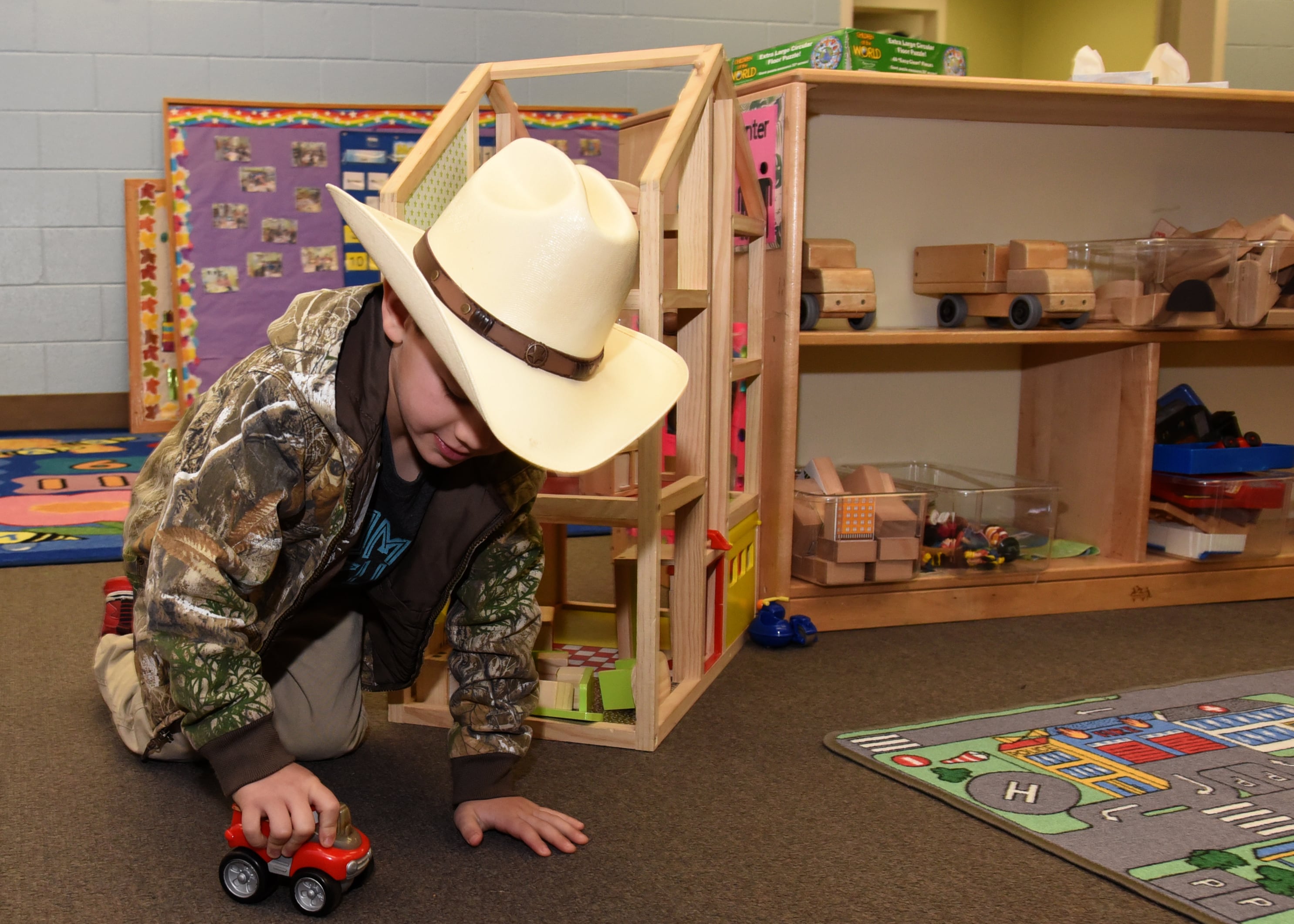Stephanie Eckhoff wakes up at 4:30 a.m. every work day. By 6:30 a.m., she’s bundling her 2½-year-old daughter into her car to drive an hour to the child development center at Eglin Air Force Base, Florida — passing her workplace on the way.
After dropping off her daughter, she backtracks another 20 to 30 minutes to work. At the end of the day, she reverses the route to the center and then to her home in Navarre, Florida.
That’s three hours on the road each day, “if there’s no traffic,” said Eckhoff. Not to mention her $100 to $150 weekly gas bill.
Eckhoff, who is married to an Army sergeant with the 7th Special Forces Group at Camp Bull Simons — technically part of Eglin Air Force Base — says they’re one of the few families in her husband’s unit who even have this option. The child care spot opened in March, after a two-year wait, so she was able to go to work. The wait was longer partly because she dropped on the priority list while going back to school.
For her the sacrifice, though difficult, is worth it.
“We have a car payment and a house payment,” she said. “With just one of us working, we would be just paying the bills and not really living our lives.
“It was important for me to start my career, so when my husband retires I can have a career that’s stable enough that he can continue his education,” she said.
But she worries about what lies ahead; she is expecting their second child this month. That will mean a return to a child care wait list at the Eglin CDC, where single parents and dual-military parents are given priority.
“So the chances of us getting a spot for our infant are slim,” she said. “I might have to quit my job and lose our 2-year-old’s spot, that we waited for forever, until we can get an offer for our infant.”
The situation at Camp Bull Simons is just one example of the struggles military families around the world too often have in finding affordable and safe child care. Even at bases where there are child development centers, the pandemic and staffing shortages have exacerbated the shortage.
The camp was carved out of a remote area of Eglin as part of the 2005 Base Closure and Realignment action. Although about 2,600 military and civilian workers live and work there, the camp has few amenities: Barracks, a chapel, a troop clinic, and an AAFES shopette and services were built, but there’s no child development center, family housing or commissary.
There are now 259 children on the wait list for child care at one of Eglin’s two CDCs, according to a spokeswoman there. There are 54 Army children enrolled, but 58 more are on the wait list, and officials believe that number is lower than the actual need.
Many don’t put their children on the wait list there simply because of the long drive, said spouses and others who talked to Military Times.
The need is especially critical for single parents and dual-military couples, said Molly Tobin, family readiness group leader for 7th SFG’s 3rd Battalion. “We have such a high op tempo in 7th Special Forces Group. The last thing they need to worry about is where their child is going to go,” she said.
Some service members are left with no other choice than to leave the military, especially those dual-military couples, Tobin said.
Meanwhile, an unknown number of spouses are unable to work and contribute to the family’s finances, said Tobin. She works remotely because she can’t find adequate care for her 21-month-old daughter. The child care situation in the local community has worsened in the decade since 7th SFG moved there, she said, adding that she is now on 17 wait lists.
“This is endemic of the retention and recruiting problem we’re having right now,” said retired Army Special Forces Col. Stu Bradin, president and CEO of the Global SOF Foundation.
Bradin got involved in advocating for a child development center after 7th SFG families approached him for help about three years ago. Recently, the foundation held a video teleconference about the child care issue, expecting around 25 people, he said. He was astounded when more than 500 people took part.
About 60% of 7th SFG families live in Crestview, 20 minutes northeast of Camp Bull Simons and 45 minutes to an hour from Eglin to the south. To get to child care on Eglin, they must pass the camp.
“Driving for one hour one way for child care is not feasible. That’s four hours in a car a day,” Bradin said. The soldiers deserve better, he said.
“The deployment tempo is insane. The things these kids deal with are not normal,” he said, citing the high number of 7th SFG soldiers who have been killed in action.
The stories of the families are heart-wrenching, he said. “This is 10 years of this crap. It’s not fair. They’re not getting the support they deserve. It’s a huge failure.”
Is help on the way?
Through the efforts of Bradin and others, the families’ needs are finally getting attention. There are some long-term and possibly shorter-term solutions in the works.
A new Army-funded child development center is scheduled to begin construction in 2025, according to Army and Air Force officials. That means it would open in 2027, if Air Force and Army officials can come to an agreement on location and whether it would be on base or off.
But that’s five years away, and families need child care now. Some are asking whether temporary child care structures could be placed on the camp to provide Army-operated child care.
In the meantime, the services are looking at other ways to bridge the gap. Air Force officials are looking at hiring additional child care workers so they can open more classrooms at Eglin AFB; making child care subsidies more readily available for families relying on more expensive civilian child care, and expanding family child care homes in the Crestview area.
The Air Force is also funding a project to renovate a former child development center on Eglin to bring in an additional 130 children.
In addition, the DoD Military Community and Family Policy office has been working with both the Army and Air Force on child care solutions for 7th Special Forces Group, a DoD spokesman said.
A private organization, Higher Ground Education, the parent company of Guidepost Montessori, stepped in recently to work with Army and Air Force officials. Planning is in the works to provide two child development centers, scheduled to open by the fall of 2023. One center will be in Navarre; the other in Crestview.
The Guidepost Montessori schools will each have a capacity of around 160 children from ages 6 weeks to 6 years. At any of their DoD-identified campuses, priority goes to the children of service members and DoD civilians, said Telisha Thomas, an Army spouse who is Higher Ground’s DoD liaison. Army and Air Force officials are helping the Guidepost Montessori centers prepare to use the military child care fee assistance programs when they open.
These fee assistance programs, operated through Child Care Aware, aim to bring military parents’ child care costs in the civilian community more in line with what they would pay for on-base child care. Child care fees at military CDCs are based on total family income, and the cost of child care is subsidized by DoD.

The sticking point: location
Army families want a child development center built near the chapel on Camp Bull Simons, where it would be convenient for soldiers.
But the Air Force has safety concerns: The camp was carved out of an active bombing range used in its testing mission. The last thing they want is for something to go awry and endanger the children, Air Force officials say.
Families and their advocates point to the fact that there’s never been an evacuation of Camp Bull Simons. Nor is there even a plan for an evacuation, said Bradin.
But Air Force officials say there are “ongoing impacts to the test mission at the complex.”
“The placement of Camp Bull Simons on the Eglin Range has made a number of previously-authorized safety profiles difficult to use,” officials said in a statement to Military Times. “The 96th Test Wing has had to reduce release speeds, altitudes and angles of weapons test to ensure the site’s safety and avoid evacuating the cantonment.”
As a result, weapons acquisition programs can now use only 68% of that corridor for conducting cross-range weapon releases, officials said.
“As we look to the future development and testing of weapons like hypersonics, autonomous and long-range stand-off systems that will occur at Eglin, mission and safety profiles will continue to evolve. While our safety calculus accounts for most anomalies, in any given year, we experience several unpredicted events during test missions that result in potentially dangerous scenarios on the ground.”
The families, however, have different risks in mind. They like that there’s more security within the gates of the installation and believe their children are safe there, Tobin said. They also think the centers are responsive to the needs of the military and look with favor on the many regulations regarding fire and safety inspections, curriculum, caregiver-to-child ratios and other requirements.
Telisha Thomas, of Higher Ground, as well as an Army official, said security and safety concerns can be addressed and negotiated for centers that are built outside the gate.

Far-reaching child care problem
Child care has been a key quality of life concern of military families for decades. Military families love their child development centers, nationally recognized for their quality, safety and affordability, but in some areas, the wait lists are so long that a child may not get a spot until the family is ready to move. Single military parents and dual-military get priority, but in some cases they still can’t find a spot for their child.
Meanwhile, there’s a shortage of child care in civilian communities as well, exacerbated by effects from the COVID pandemic, when a number of centers shut down, and the shortage of child care workers.
But military child care issues preceded the pandemic. In September 2019, there were 213 children with an immediate need on the waiting list at Eglin, with an average wait time of 56 days. That wait list now stands at 259.
In the Army overall in 2019, there were 5,661 children on wait lists.
For years, lawmakers have brought in DoD and service officials to testify about their military construction budgets, and grilled them about why there are so few requests — if any — for child development centers. Defense officials and the services have tried to beef up child care options, with their highly regulated and subsidized family child care, operated by military spouses in their homes; child care fee assistance to bring down families’ cost for quality child care in the civilian community, and an expansion to include a current pilot for child care fee assistance for in-home child care such as nannies.
RELATED

More community involvement
Defense officials said they’re seeing more local community involvement in efforts to increase child care options for military families. For example, officials said, “the community surrounding Joint Base Lewis-McChord is one of those locations where the community really galvanized around supporting the Military Child Care in Your Neighborhood Plus program.” That program is expanding the number of child care providers in the private sector that qualify to participate in the child care fee assistance program, easing the cost for military families.
Leaders in various civilian communities are coming to the services to offer their help in easing the child care shortages, one service official said.
Higher Ground Education has been actively seeking out locations where they can help fill the need for child care for military families. Guidepost Montessori opened up a center near Fort Leavenworth, Kansas, in the fall of 2021, within a year of the need being identified. The center has an ongoing wait list, Thomas said.
Other specifically military-affiliated campuses are located in Jacksonville, Florida, and San Antonio, but there are 43 Guidepost Montessori locations nationwide that participate in the military fee assistance programs, she said.
The families at Camp Bull Simons, frustrated for years, are now seeing some movement in their request for help, partly because they’ve gotten community involvement and support, led by Stu Bradin.
“The 7th Special Forces Group is frustrated,” Bradin said. “That’s why we’re pushing. We’re not going away.” The foundation has met with 14 lawmakers and has had good bipartisan responses, he said.
Lawmakers in the House and the Senate have requested a briefing from Army and Air Forces leaders by Dec. 1 on the issues surrounding the construction of a child development center at Camp Bull Simons. Rep. Debbie Wasserman Schultz, D-Florida, chairman of the key House Appropriations military construction subcommittee, has supported their effort, and Florida Republican Sens. Marco Rubio and Rick Scott have written to Secretary of the Army Christine Wormuth and Secretary of the Air Force Frank Kendall.
“The lack of urgency and failure to understand the depth of the impact this is having on our operators is growing increasingly frustrating for us and for our constituents,” they wrote, noting their previous letter to then-Army Secretary Ryan McCarthy in February 2020 and their subsequent discussions with Eglin AFB leadership and others across DoD.
In recent months, Army and Air Force leaders have visited the area to explore the issue.
Tobin said the support the families are getting is making a difference.
“We’re not alone in this fight,” she said. “The support we’ve gotten as a community is incredible. We’re not sitting here fighting, beating our heads against the wall. People have said they didn’t realize what we were going through.
“It’s very comforting, reassuring. We’re getting traction. It’s nice to know the community has stepped up,” she said.
Karen has covered military families, quality of life and consumer issues for Military Times for more than 30 years, and is co-author of a chapter on media coverage of military families in the book "A Battle Plan for Supporting Military Families." She previously worked for newspapers in Guam, Norfolk, Jacksonville, Fla., and Athens, Ga.





